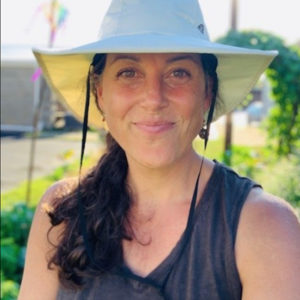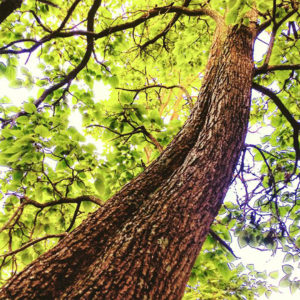 A few years back, while I was hiking with a friend in Appalachian Ohio, she commented on a tree we passed, expressing sadness for the imprints left by lovers who’d carved into the trunk.
A few years back, while I was hiking with a friend in Appalachian Ohio, she commented on a tree we passed, expressing sadness for the imprints left by lovers who’d carved into the trunk.
We kept moving, and a thought popped into my head, more of a question really. So I spoke it aloud, asking her how she knew bearing the expression of love had been a negative experience for the tree. I invited her to join me in imagining other story lines, giving voice to the tree through imagination.
She spoke of the tree’s pain and wound, while I wondered if the tree felt honored to be chosen out of all the other trees to carry the marks of love, and if the other trees might be jealous. My friend proposed that perhaps it was like a rite of passage, a tattoo, or some other similar tradition that offers beauty or meaning by experiencing a temporary challenge or pain. “Could it have been a growth-promoting experience for the tree?” she asked.
As we made our way down the trail, walking and talking, we came up with many possibilities, shifting the narrative out of pain, anger and victimhood into an experience offering a unique perspective. Perhaps the tree wished she hadn’t been selected at first, but later realized the love she felt from the couples that stood kissing beside her after completing their artwork had become cherished memories and something that set her life story apart.
I’ve thought about that hike and playful conversation each time I see another with initials encircled by a heart. The tree inspired me to create a mindfulness exercise intended to create a deeper bond with the natural world, while also shifting into the right hemisphere and strengthening the intuition and imagination muscles.
Life has reminded me many times, the antidote to assumption is curiosity. So, I invite you to pause from your work or other daily activities and join me for a moment of talking with a tree.
You’ll only need a tree, a journal or piece of paper, a writing utensil, a phone or a camera, intuition, imagination and curiosity. Make sure to wear comfortable clothing so you can sit on the ground, or bring a chair if you’re not able to get down that low. And one tip, trees open up more when people take off their shoes.

Talking with a Tree (suggested time is 30 minutes)
- Gather everything you need and head out to the back or front yard. If you live in a place where there are no trees, take this opportunity to visit the nearest park or green space.
- Walk around the yard or park, observing and listening, paying attention to which tree is calling for your attention. When you’ve found it, choose a spot up close.
- Drop your bag on the ground and take off your shoes. Take out your phone or camera, walk all the way around the trunk, and make one photograph of the tree.
- Return to your chosen spot, and sit beneath the tree, facing it. Introduce yourself and share your intentions with your new friend.
- With your journal and writing utensil beside you, close your eyes and take three deep breaths, making sure your belly is expanding and your exhale is slower than your inhale.
- Sit in silence for a few moments, and begin listening to see if the tree might already be starting a dialogue, because often, they’ve been waiting for this moment. Then, get prepared to write and begin asking the tree questions. After each question, sit for a moment, giving the tree time to respond. Interview the tree as you would a person, and invoke your inner journalist, starting your sentences with who, what, why, when, where and how.
- If you don’t hear anything, imagine you are the tree. How would you feel; what would you see and hear in that space? Look at the shape, the trunk, the branches, the roots, the bark and the leaves. Are there marks on the tree, holes or wounds? Look up and see if there are nests in the canopy, or a birdhouse or swing. Give the tree your full attention and practice deep listening.
- When you feel your conversation coming to a close, thank the tree for spending time with you, and pick up your phone or camera again. Walk around your new friend, paying close attention to her beauty and details. Is there light illuminating the leaves, or are there creatures benefitting from her existence. Use your eyes and ears to truly see the tree, and make another photograph. (You’re welcome to make a few images if you’d like.)
- When you feel the experience is complete, pack your bag and make your way back into your house for a cup of tea.
- Before re-engaging with your day, take a few moments to reflect on your experience by reviewing your writing and images. Do you notice a deeper connection in your images after the conversation? If there’s anything that comes up, take time to write your thoughts down.
—Erin LaBelle
Erin LaBelle is a friend of Prairiewoods. She looks forward to attending Prairiewoods’ Spirituality in the 21st Century: Hope in Action April 26–27. This year’s event features Susan Bauer-Wu, Rev. Veronica M. Johnson, Leah Rampy and musician Sara Thomsen. Learn more at prairiewoods.org/spirituality-in-the-21st-century.


